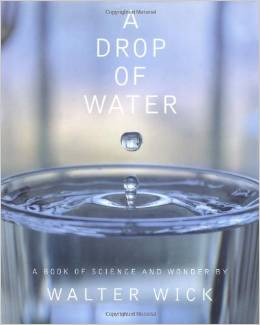This year, World Water Day, landed on Sunday, March 22nd. It is the hope that World Water Day will raise awareness of the excessive use of water and decrease the population’s everyday usage. Here is a good example of how water is used in excess: The average American, taking a 5-minute shower, uses more water than an average person in the slums of a developing country in a whole day! I think a 5-minute shower is on the short end for most people. How long is the shower you take?
 Read: A drop of water by Walter Wick
Read: A drop of water by Walter Wick
Evaporation, condensation, capillary action, and surface tension are explained through simple text and illustrated by pictures that reveal water in its many awesome transformations. The last pages of the book feature experiments that welcome the reader into the world of scientific investigation.
Watch the videos below to help you understand how the water cycle works.
Watch the videos above and answer the posted questions by clicking HERE.
Create your own mini “Water Cycle” bag!
• A clear ziplock quart size bag
• Clear shipping tape
• Permanent marker pens in assorted colors
• Blue food coloring
• Water or snow
• A window and some sunshine
How to do the experiment
- Design your bag. Try to include the sea, some clouds and the sun.
- Add a few drops of blue food coloring to the water and pour into bag
- Seal the bag securely and tape it to a sunny window.

After approximately 30 minutes you will start to see some water droplets forming on the inside of the bag. If you want to see it rain, gently tap your mini “Water Cycle” bag.
Additional Resources:
- The Water Cycle Animated
- Water Cycle Discovery Education
- Cloud Match Game
- Foss Water Activity
- Kidzone Science
- Water Project WET: An interactive trip through the water cycle. In this game, students learn where and how water moves through the complex and endless water cycle.
- Waterlife: Waterlife is a twenty part story through which students can learn about the role of water in our lives. Through the story students learn about things like fishing, pollution, invasive species, wetlands, and the politics of water conservation. When students select a part of the Waterlife story they will be able to hear narration, see visuals, and read the text of the story. Some parts of the story also contain links to external resources that student can explore


